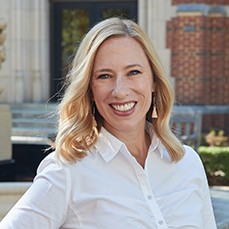Stephanie Buettner
Executive Director of Advancement
sbuettner@ou.edu
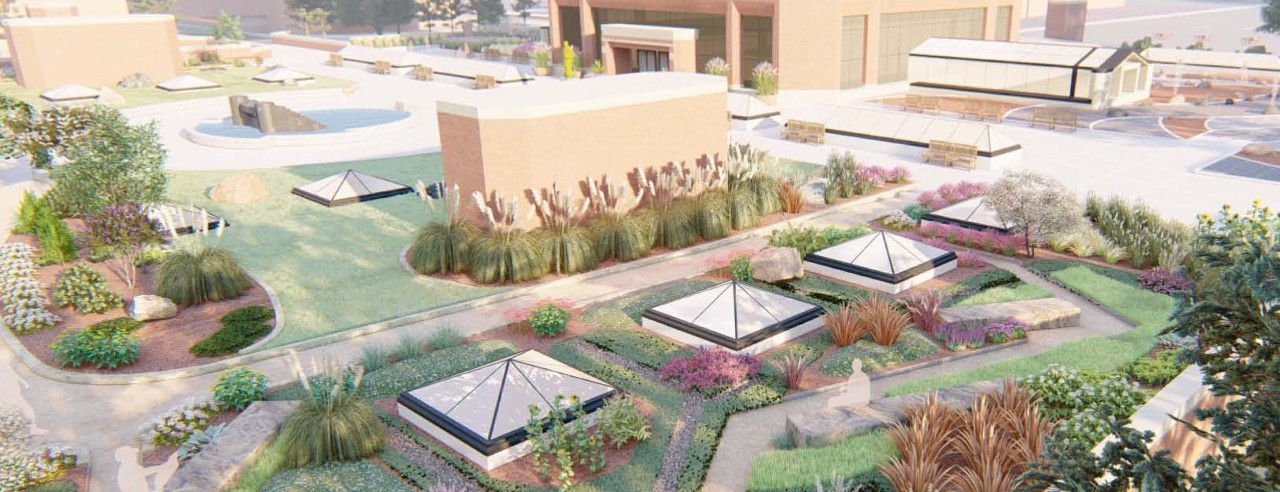
The Sarkeys Energy Center complex, originally completed in 1991, is home to several academic units of the University of Oklahoma including the Mewbourne College of Earth and Energy, the College of Atmospheric and Geographic Sciences, and the Gallogly College of Engineering School of Chemical, Biological and Materials Engineering.
The recent renovation and repairs to the Green Roof on the O'Brien Plaza have provided an opportunity to build a unique and highly anticipated Outdoor Classroom for students in Geosciences, campus visitors, and K-12 outreach.
On Sept. 22, 2020, leaders from the School of Geosciences and the Mewbourne College of Earth and Energy introduced exciting changes to the Sarkeys Energy Center O'Brien Plaza.
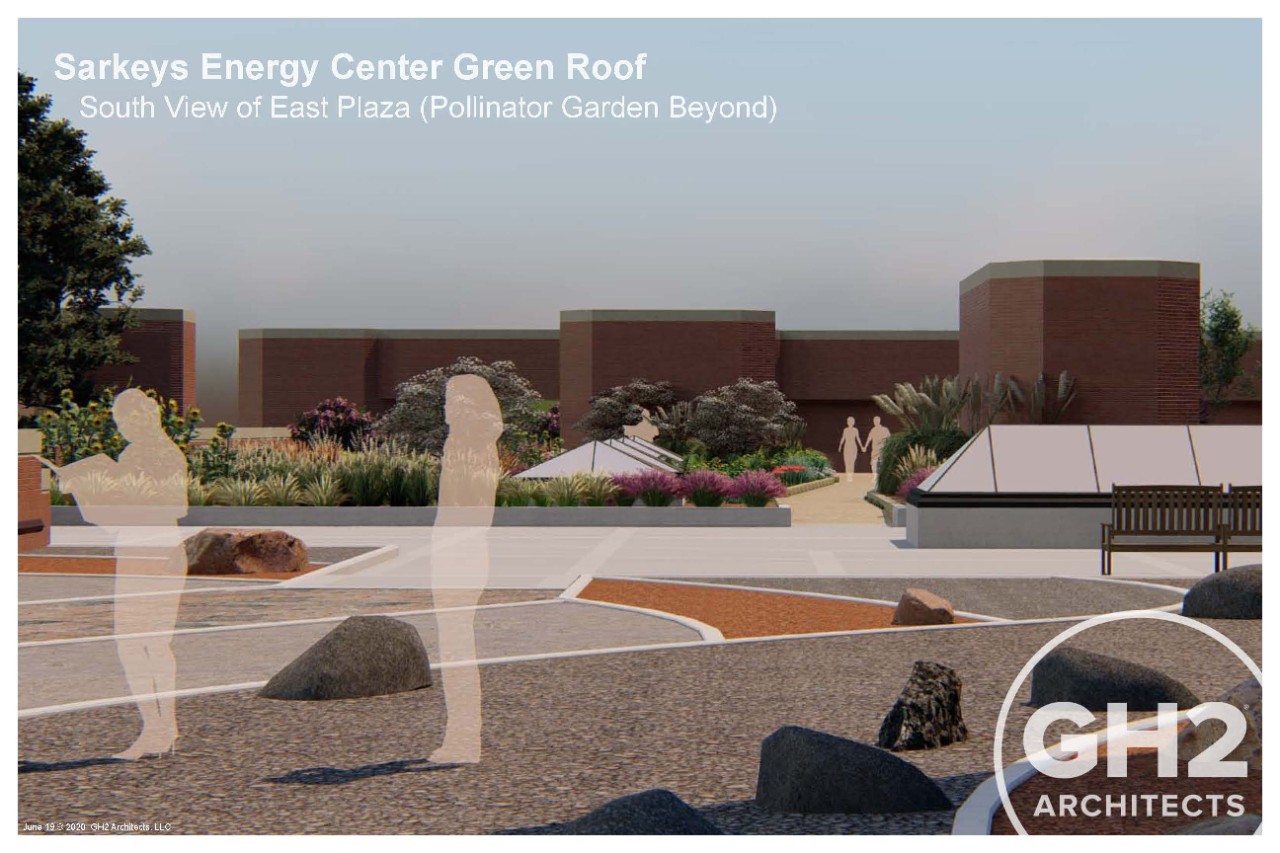
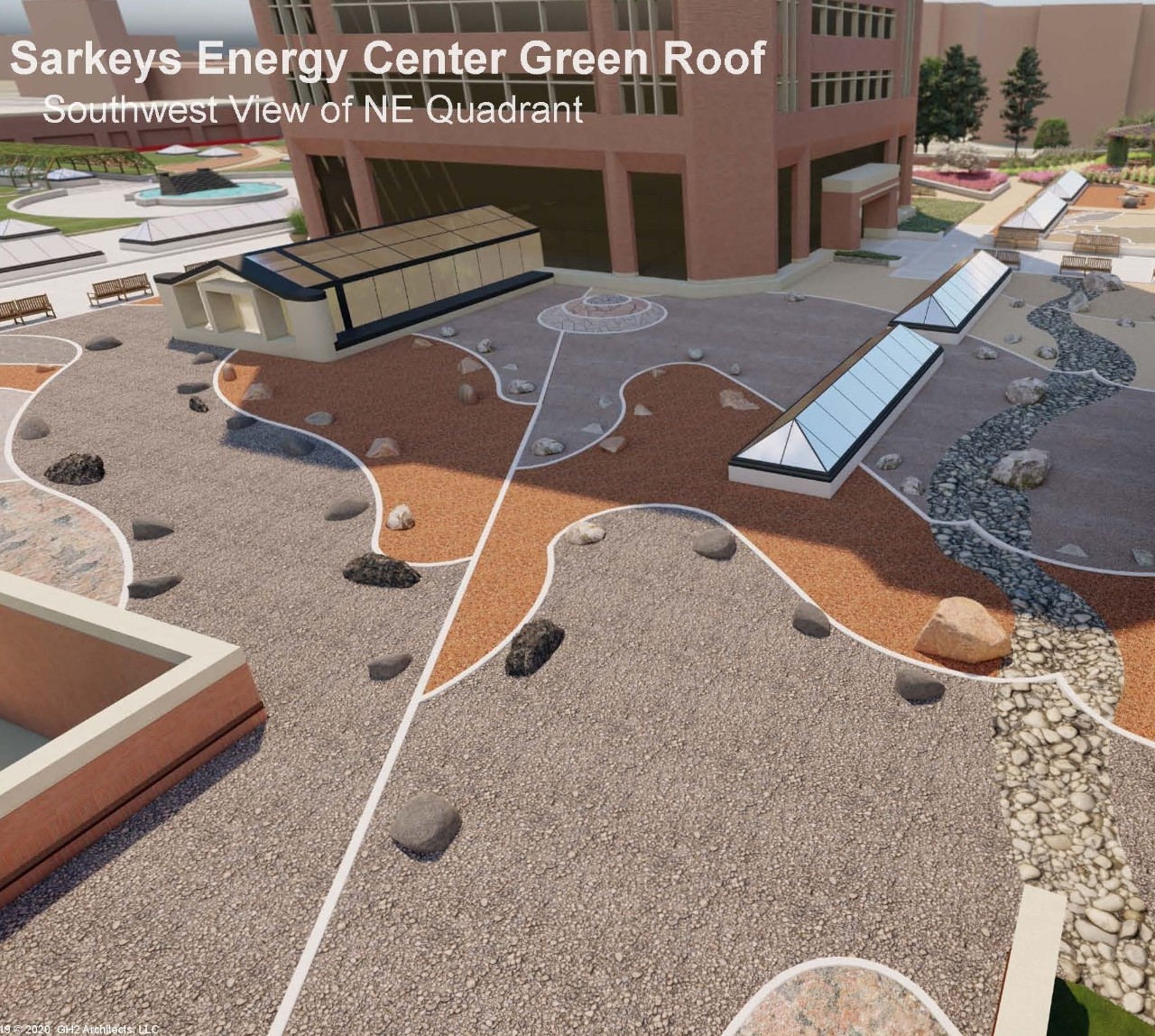
Incoming geosciences students have to quickly learn how to interpret geological maps in their first geosciences course. If they fail to gain mastery of this essential skill, they may struggle in upper-level courses, and are at risk of leaving the program. For this reason, the Sarkeys Energy Center O'Brien Plaza will feature a walkable geologic map that displays many topographic and geologic contact features that students practice mapping and interpreting while in lower-division courses and field camp.
The different gravel colors represent different rock types. Within each gravel color there will be large samples of that rock type that can be described and oriented samples to record strike and dip data. Each rock type will have a webpage with links to thin section and SEM photos of that rock type. The contacts show structural forms such as anticlines and synclines, faulted layers, a layered igneous intrusion, and illustrates the rule of V's in a streambed.
The display will provide outcrop scale representations of a wide variety of rocks that may not be accessible for many students in their courses currently. These large rocks allow students to make outcrop-scale observations and develop time-management skills for collecting field data. Rocks will be selected and arranged so that students can use them to take measurements with compasses (strike and dip, trend and plunge). In addition, thin-section microscopy samples of the rocks will be available to students for further examination. With properly selected and placed rocks, instructors will use them to teach spatial relationships between metamorphic grades and facies, igneous terrains, and sedimentary sources and sinks.
Signage and QR codes will provide students and visitors with additional information.
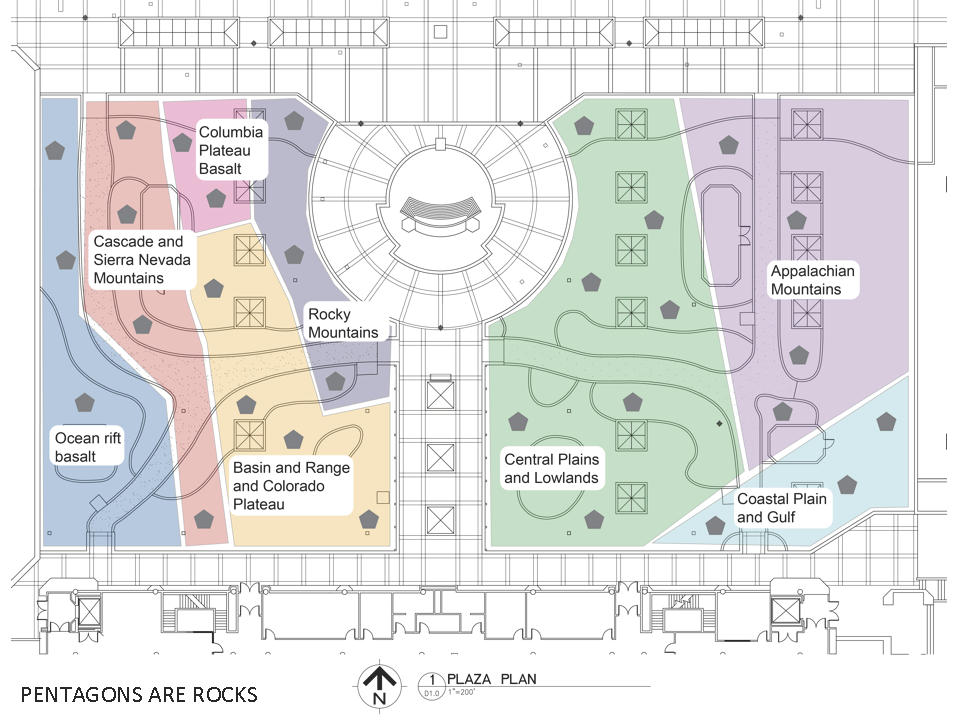
This amazing display will consist of large boulders representing the geological terrains of the continental U.S., providing a big-picture view of the geological processes that shaped America and the continental-scale dynamics that have created the rocks around us.
U.S. Geological Map


This amazing display will consist of 8 to 20 slabs of rock, 6-feet wide by 3-feet thick, inclined at 45 degree angles. Rock slabs will represent all geologic periods through time. The display will have a crystalline basement boulder in the center and younger sediments inclined and in a stepped pattern moving away from the center.
While the display will be used individually by students and visitors interested in learning about geological history and stratigraphy of Oklahoma, it also will have direct use in School of Geosciences courses. Professors teaching courses that cover outcrop-scale descriptions, stratigraphy and methods for taking measurements with a Jacob’s staff and compass can utilize the space as an outdoor lab.
The slabs’ incline will allow students to practice taking strike-and-dip measurements on a variety of rock surfaces. Because of the nature of sedimentary rocks, the large slabs will offer students learning opportunities not possible with small, hand-held samples. These outcrop-scale displays will allow students to make observations required to form an interpretation for the environment of deposition, which is a foundational skill for School of Geosciences students.
Display rocks representing environment and landscape changes in Oklahoma through time will showcase economically important formations and provide background information on their geological setting and post depositional histories.
Visitors will learn how the rocks of Oklahoma give us clues about what the state looked like throughout the ages. Signage will further illustrate the landscapes of the past. The display could be paired with the Walk Through Time exhibit at Sam Noble Oklahoma Museum of Natural History.
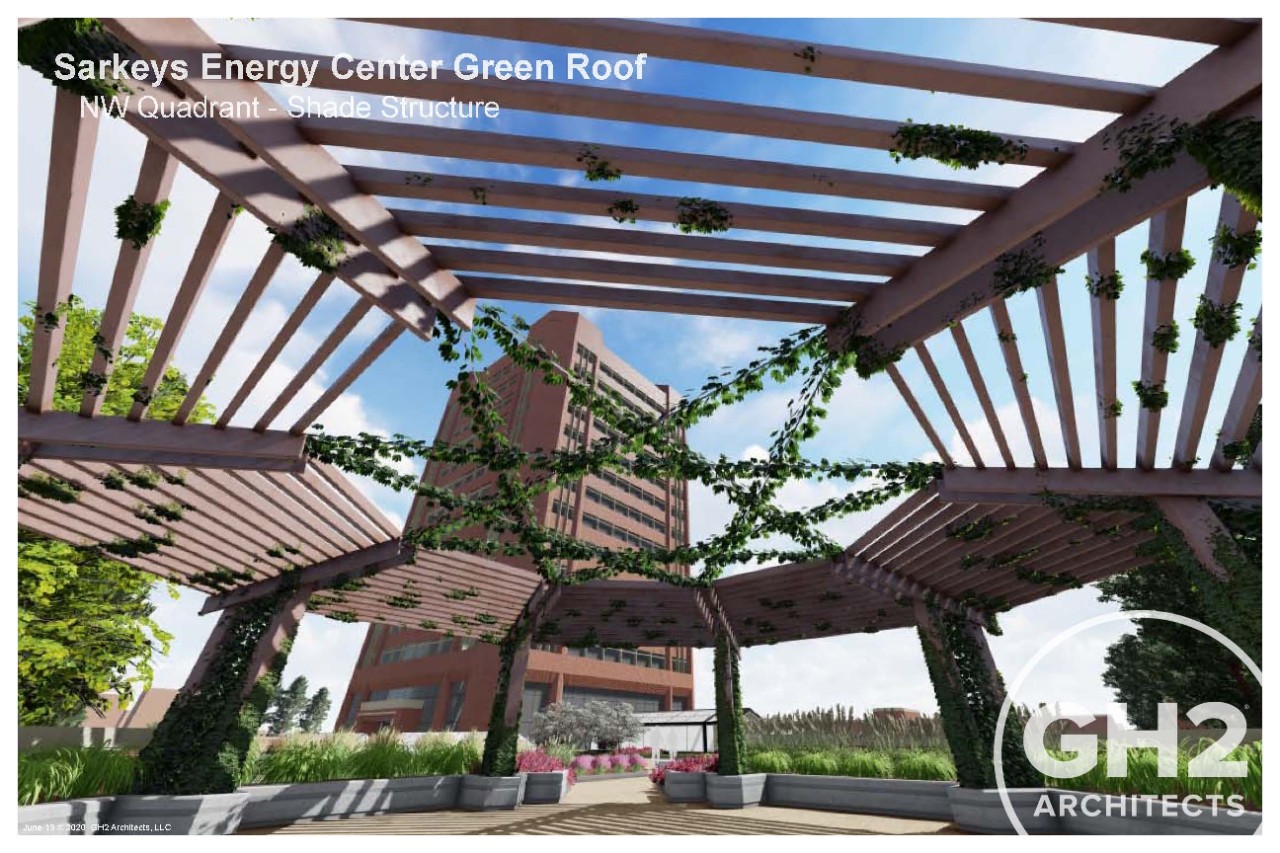
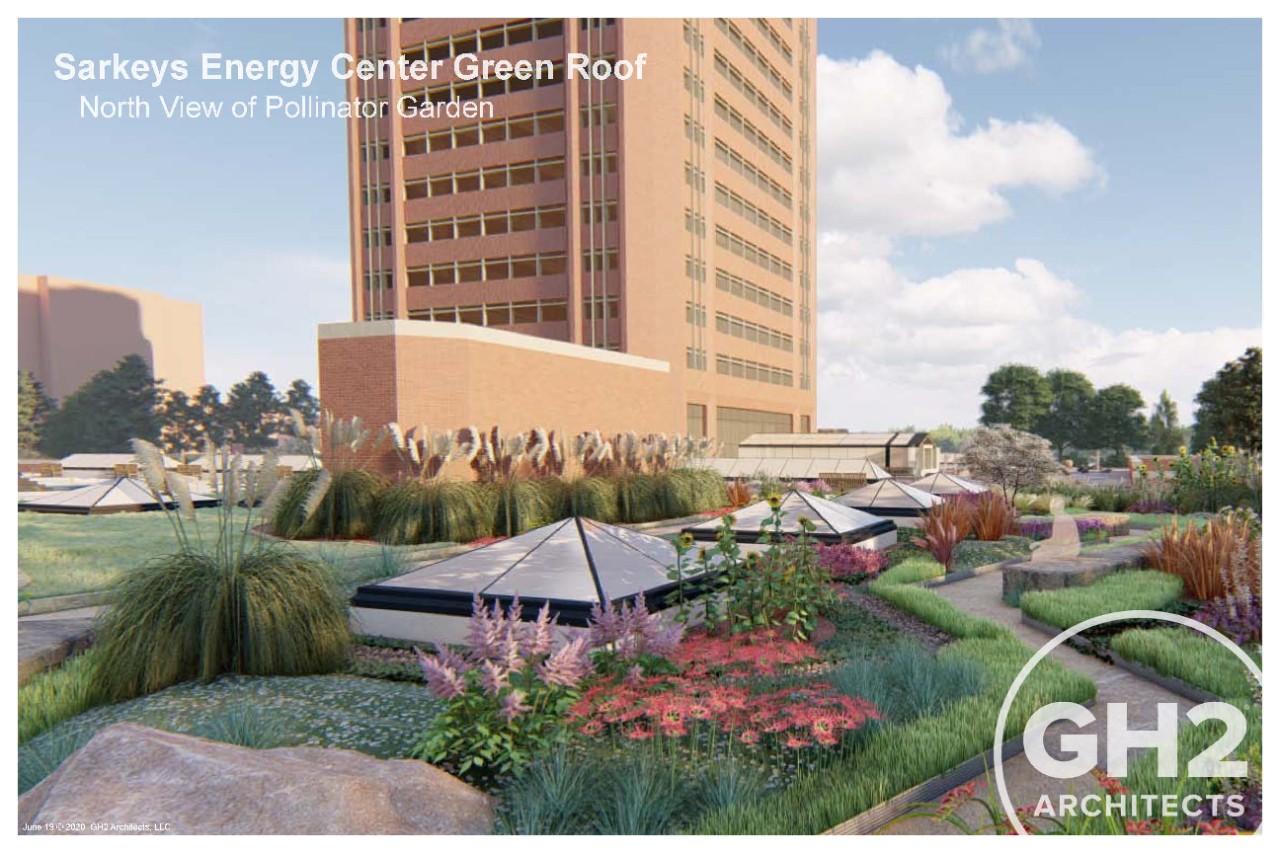
Northern Border (along Boyd Street)
The northern border of Sarkeys Plaza will feature sculptural slabs of stone to demonstrate the age of rock in anticline and syncline formations. This outdoor classroom will be used by students for “strike and dip” exercises. QR codes will provide links to additional information for campus visitors and K-12 outreach.
Pergola: Perfectly placed in the northwest corner of the plaza, a large pergola will provide shade, seating and a beautiful view of the entire plaza. Surrounded by flower beds, the pergola will feature reinforced cables overhead to facilitate vine growth. The pergola will be a destination for students and guests while they are on the plaza.
Flower Beds: Raised flower beds will provide much needed vegetation and beauty to the Outdoor Classrooms and feature plants ideal for growing in Oklahoma.
Paleobotany Outdoor Classroom: This Outdoor Classroom will feature lab space for students hammering rocks. The boulders in this space will represent the geology of Oklahoma and provide QR codes with links to additional information for campus visitors and K-12 outreach.
Outdoor Classroom: This Outdoor Classroom will feature decomposed granite, petrified wood stump stools, and imbedded boulders for students to sit and take notes.
